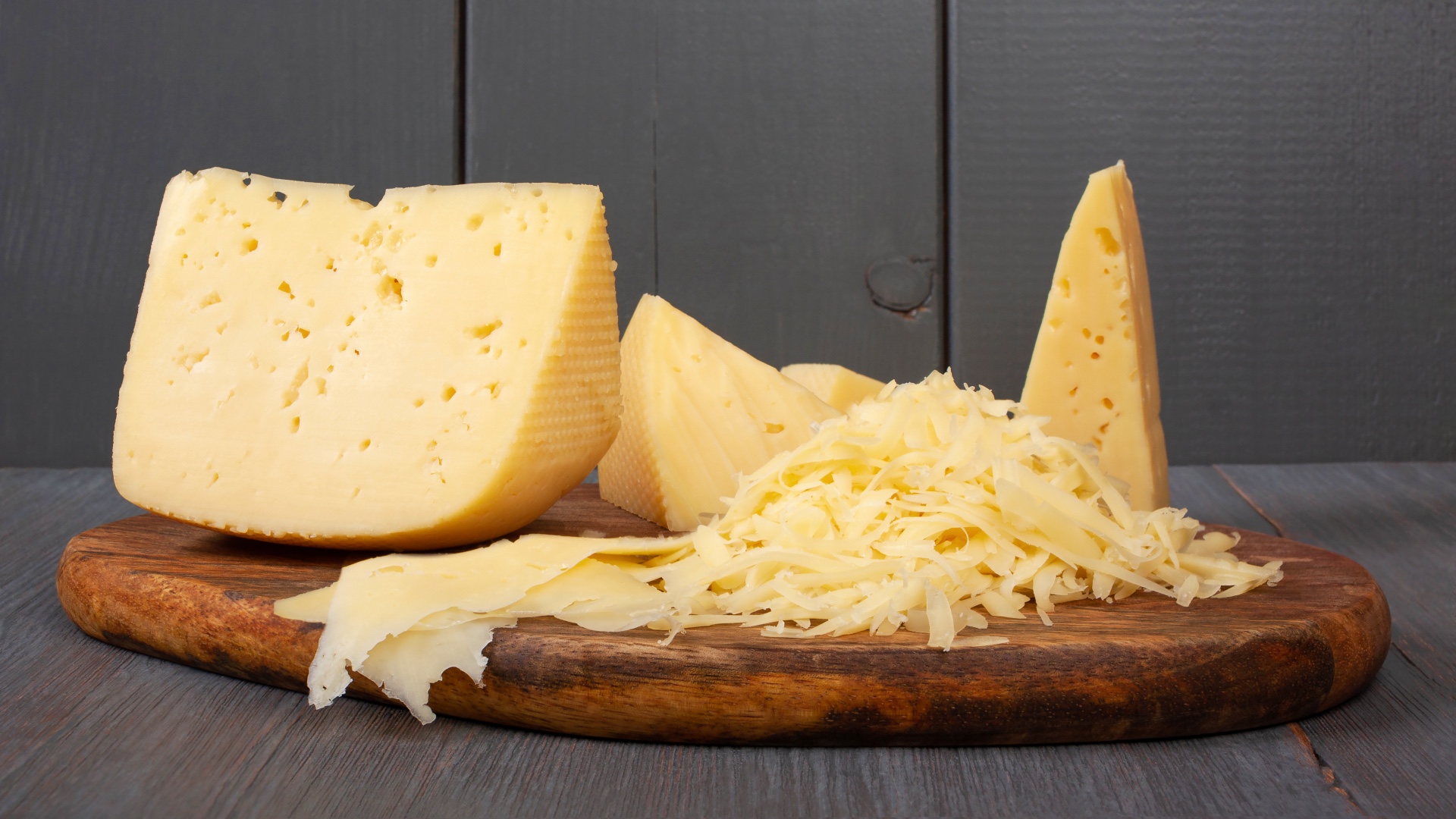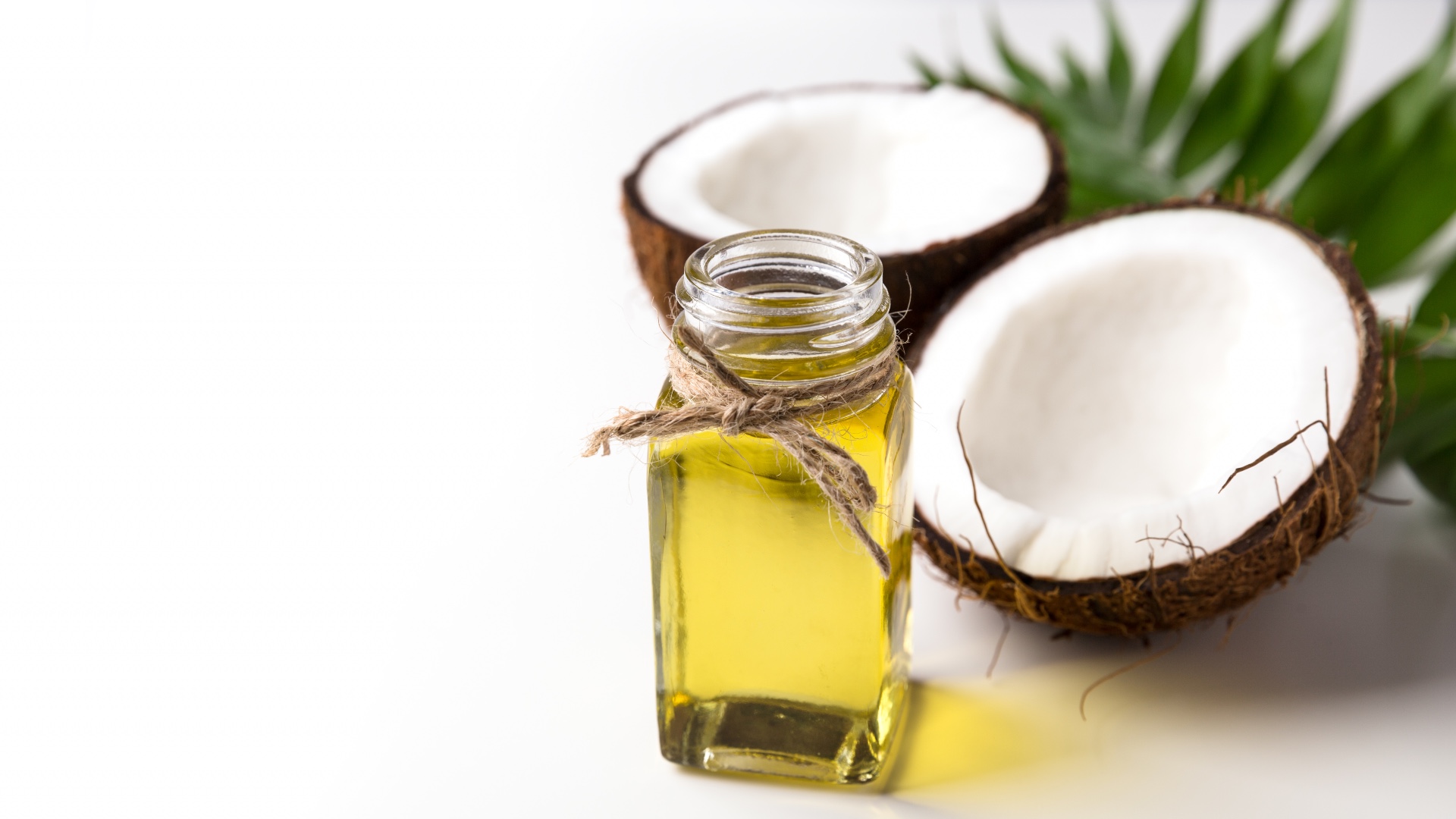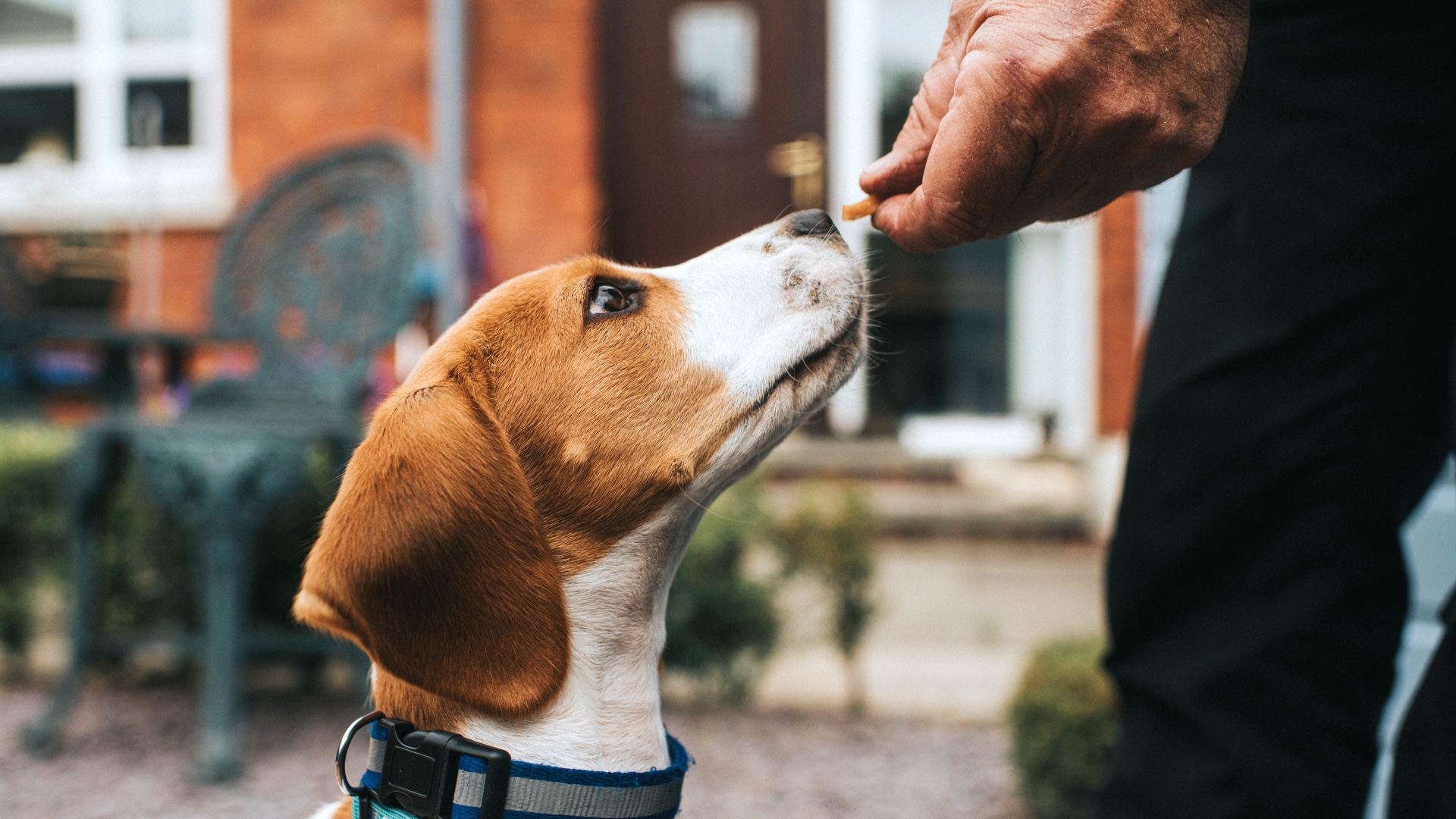10 healthiest dog treats for training
Using a variety of dog treats for training is the perfect way to reward good behavior. But which foods should you choose? We dish up the best of the best!

Using nutritious and delicious dog treats for training is the perfect way to kill two birds with one stone. Not only will you be rewarding your pup for good behavior with a scrumptious snack that will have them salivating, but you’ll have peace of mind knowing that it’s good for them too. You’ve got to love a win-win!
While it’s useful to have a pack of the best dog treats on hand for those times when your fridge or kitchen cupboards are looking a little empty, there are lots of human foods that are just as healthy for our canine companions as they are for us.
As long as the bulk of your pup’s daily calories are coming from the best dog food, which provides a complete and balanced meal, and less than 10% are coming from treats, the foods we’ve listed below can be a great way of reinforcing the positive behaviors you want to see while also adding some variety to your dog’s diet.
- Training dogs with treats: How to reinforce good behavior the right way
- Eight tips for training a rescue dog: A vet's guide
- How to crate train a dog
1. Xylitol-free peanut butter
Smooth or crunchy, nothing beats the creamy and rich flavor of peanut butter and as well as being a firm favorite amongst us humans, it’s also a food that gets our canine companions jumping for joy.
Because it’s so filling and comes packed with goodness, peanut butter makes a great training treat. Whether you spread it on a toy or give it to your dog straight off your finger, unsalted peanut butter will give your pooch a good hit of protein and healthy fats, as well as vitamins B and E.
Just a word of warning though - you want to steer clear of any peanut butter brand that lists Xylitol as an ingredient as this sugar substitute is poisonous for dogs and can cause a rapid release of insulin that can be life-threatening.
2. Cooked chicken
One of the most common ingredients in the best dry dog food, cooked chicken is an excellent source of protein and it’s exactly the kind of food your hound would be eating if they were living in the wild.
While some pet parents favor feeding their furkid a raw food diet, we advise against raw chicken because of the risk of salmonella and other bacterial infections that could cause your dog to become unwell.
Instead, roast, poach, grill, or bake unseasoned chicken and once removed from the bone, cut into pieces that can then be dished up as a treat. You can even dehydrate chicken for a yummy chewy snack which is a great way of varying the texture.
3. Fish
We recommend a good teeth cleaning after this one so you don’t find yourself on the receiving end of some rather smelly doggy kisses and cuddles, but the displeasing odor aside, boneless fish is a much-loved and nutritious treat that’s sure to be a huge hit with your hound.
So, what fish should you go for? The best are those with a shorter lifespan, such as salmon, ocean whitefish, herring, cod, flounder, and Arctic char as longer-living species, like tuna and swordfish, contain a lot of mercury which isn’t good for dogs.
If you’re going to feed your dog fish, make sure it’s cooked and not raw and remove the bones, which can cause damage to the intestinal tract and can easily become lodged in the mouth or throat.
4. Cheese

Most dogs adore cheese which is why it makes such a great training tool, but it’s worth being aware that while almost all hound’s love this creamy stuff, not every digestive system will be suited to it.
Just like us, some dogs are lactose intolerant, which means they can’t digest the sugar found in dairy. So, if you’re going to be using cheese, watch out for stinky stools, gas, and an upset tummy as all of these are signs that cheese and your canine companion are not a match made in heaven.
Aged cheeses, like cheddar, swiss, and parmesan, are all low in lactose, so these are a good starting point for all dogs and if your pup doesn’t show signs of being lactose intolerant, you can also try other cheeses, like mozzarella.
5. Homemade dog treats
Learning how to make your own homemade dog treats can be a wonderful way of rewarding your pooch with the ultimate reward and unlike store-bought treats, you know exactly what’s in them.
Whether you stick with fruits and vegetables as the main ingredients, opt for peanut butter, or go for dehydrated dog treats, whipping up a batch of tasty and healthy treats in your own kitchen is the perfect way to show your pooch some love.
6. Apple slices
With a satisfying crunch and a sweet flavor, apples are a guilt-free treat that come loaded with antioxidants, fiber, and vitamins C and A. They’re also great for freshening your doggy’s breath and cleaning their teeth.
While apples are definitely nutrient-dense, they do contain a lot of natural sugar, so stick to just a few slices to make sure your dog doesn’t experience diarrhea. You’ll also want to remove the seeds as these contain cyanide, which is toxic for dogs.
7. Popcorn
The go-to movie snack for many of us humans, natural popcorn can also serve as a tasty treat for your pup. A great occasional snack, plain air-popped popcorn that’s free of butter and salt makes for the ideal low-calorie treat and it comes with plenty of fiber, B vitamins, protein and iron too.
8. Coconut

High in vitamins, minerals, and fiber, coconut is also rich in a medium-chain fatty acid called lauric acid, which can boost the immune system and help reduce inflammation in the body - great if you have a dog suffering from joint pain.
It’s incredibly nourishing too, making it ideal for keeping your dog’s skin and coat healthy, and it can also help fight off viruses and treat yeast infections. Definitely a superfood!
Just be aware that the medium-chain triglycerides present in coconuts can cause gastrointestinal upset and bloating in some dogs so start with a small amount of raw coconut meat or oil and see how your pup responds.
9. Eggs
The incredible egg is a powerhouse of nutrition and as well as being high in protein and fatty acids, they’re also rich in vitamins and minerals. While some pet parents will feed their dog raw eggs, we recommend serving them up cooked to avoid the risk of salmonella.
Try scrambled or hard boiled eggs and if your vet is okay with it, you can even give your dog the shell, which contains a range of minerals that help the metabolism and immune system to function properly.
The average egg contains 60 calories, so make sure you work out how many calories your dog can consume from treats each day and then chop up the egg and portion out accordingly.
10. Pumpkin
Rounding out our list of the healthiest dog treats is glorious pumpkin which boasts a range of essential vitamins and minerals to keep your pup’s immune system firing on all cylinders. It’s also great for skin and coat health and the vitamin A supports vision.
When serving this vegetable to your dog, always opt for plain canned or cooked pumpkin, avoiding spices or sugar. Cinnamon, a common addition to canned pumpkin pie filling, is dangerous for dogs, but thankfully, there’s plenty of plain canned pumpkin to be found.
You can also roast or steam your own, or if you fancy getting creative, check out our great recipes for homemade pumpkin dog treats.
What kinds of treats should you use to train your dog?

The right treats make the best reward and it can also help make those training sessions a lot easier for both you and your pup, but how do you know what the ‘right’ kind of dog treat is?
When it comes to training treats, it can be helpful to think of them as falling into two distinct categories: fast vs slow-eating treats and high vs low-value treats. Let’s take a closer look at both:
Fast-eating vs slow-eating treats
Fast-eating treats are the kind of treats that can be consumed quickly and are best used when you’re wanting to give your dog a lot of treats in a short space of time. This is known as a high rate of reinforcement and it is particularly useful when you’re wanting to move onto the next repetition quickly and keep your dog focused, for example, when you’re training your dog to walk on a leash.
Slow-eating treats are ones that you want to last for as long as possible and are best used when you’re wanting to train your dog to sleep in his crate or to behave himself when he’s home alone. Chew sticks and toys or puzzles that can be stuffed with food are great examples of slow-eating treats.
High-value vs low-value dog treats for training
Low-value treats tend to be dry and crunchy and can be used regularly during training to encourage continued good behavior. Most of the treats you’ll find at your local supermarket are low-value and they’re a good choice for everyday use as they tend to also have less calories than high-value treats.
A high-value treat tends to be moist and is something your dog doesn’t get very often. These are great for rewarding outstanding behavior, but you want these treats to be special, so don’t dish them out every day.
High-value treats are things like pieces of chicken, peanut butter, freeze-dried meats, and other tasty morsels that your dog only gets occasionally. They’re ideal for use during socialization training, highly distracting environments where you want to reward your pup for paying attention to you, and in behavior modification training.
Should you give dog treats when training?

A lot of pet parents wonder if they should be using treats to train their dog or if there’s a better way of reinforcing good behavior and that’s certainly a good question.
Using treats to positively reinforce behaviors that you want to see repeated is a powerful tool when it comes to shaping or changing your dog’s behavior. Food rewards can make your dog more responsive, increase the likelihood that a training regime will be successful, and help you create a positive connection with your pooch.
That being said, it’s worth noting that dishing out too many treats can cause issues with weight gain and if you only ever use treats, your pup may become dependent on these food-based rewards as the only method of positive reinforcement that they’ll accept. With that in mind, we recommend using a mixture of treats alongside praise and affection when training and rewarding your furkid.
PetsRadar Newsletter
Get the best advice, tips and top tech for your beloved Pets

Kathryn is a freelance writer who has been a member of the PetsRadar family since it launched in 2020. Highly experienced in her field, she's driven by a desire to provide pet parents with accurate, timely, and informative content that enables them to provide their fur friends with everything they need to thrive. Kathryn works closely with vets and trainers to ensure all articles offer the most up-to-date information across a range of pet-related fields, from insights into health and behavior issues to tips on products and training. When she’s not busy crafting the perfect sentence for her features, buying guides and news pieces, she can be found hanging out with her family (which includes one super sassy cat), drinking copious amounts of Jasmine tea and reading all the books.
